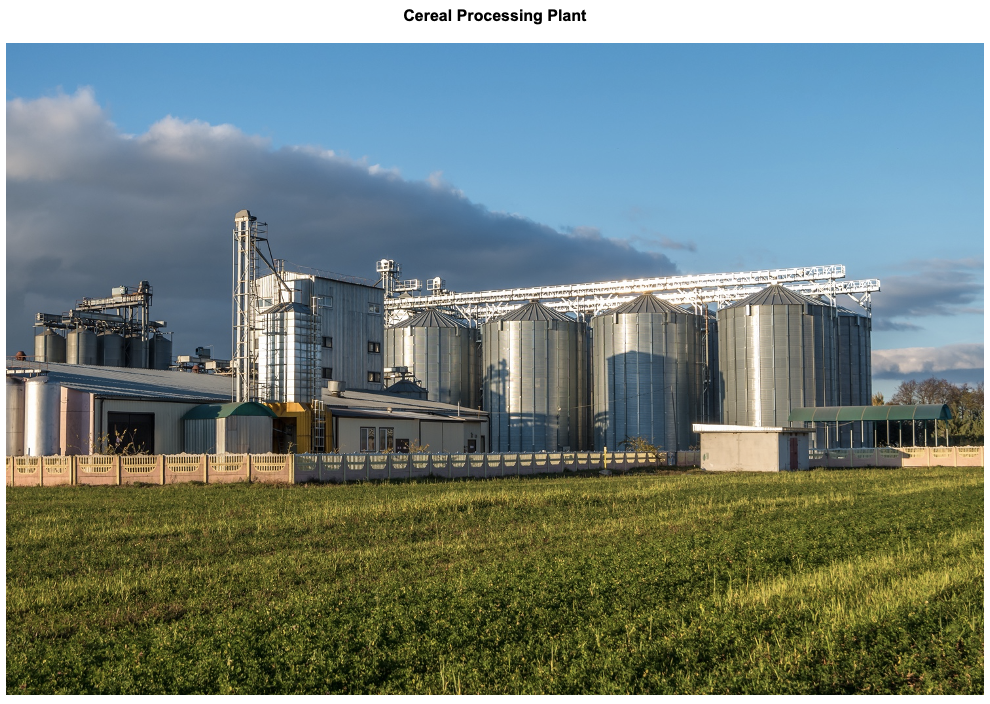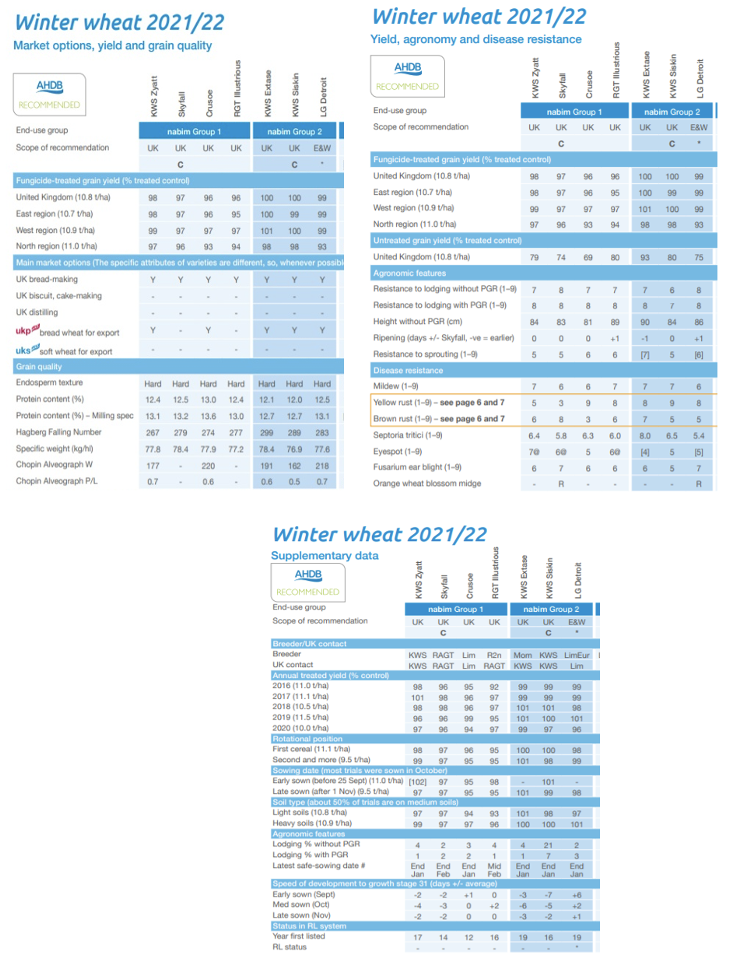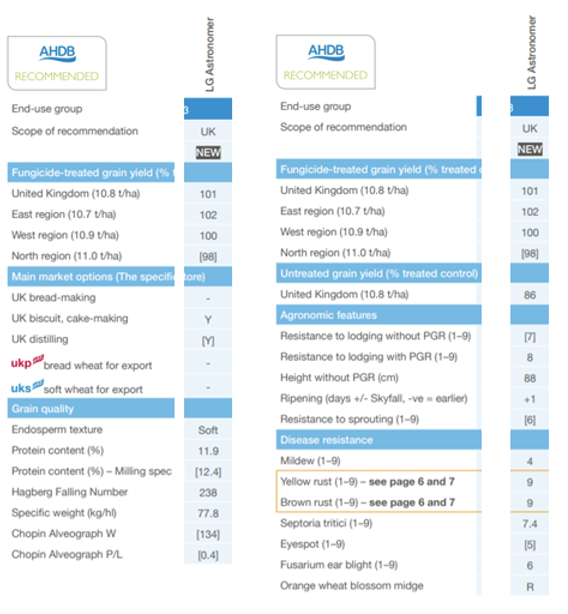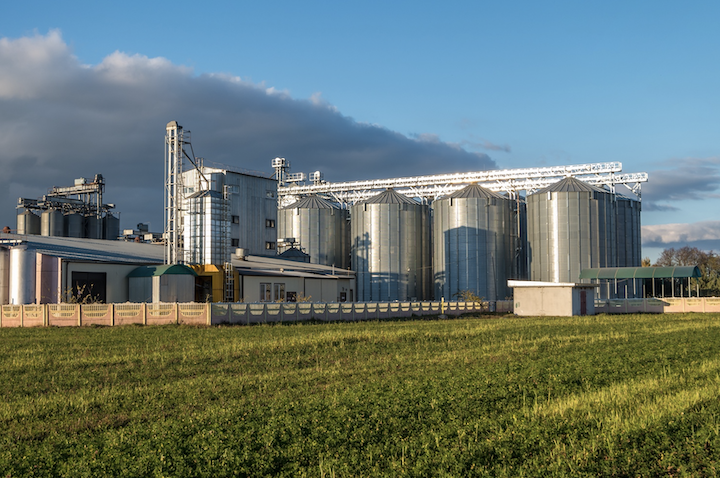- Last time, we explained the strict standards that are applied to seeds.
- There’s related work; helping farmers select the mostly suitable varieties for their specific situation.
- The information source is known as a Recommended List (RL).
Independent Advice
The idea behind a Recommended List (RL) is to provide farmers with unbiased results from an independent testing authority. In the UK, this is done by the Agriculture and Horticulture Development Board (AHDB), a statutory levy board. Apart from the RL and other advice for cereal and oilseed growers, the AHDB also provides a range of advice and knowledge banks to the horticulture, pig, beef and lamb, pork, dairy, and potato sectors. Each sector is ring-fenced so levied funds can only be used in that sector.
For example, for cereals, the levy (GBP/mt) comes from a combination of growers (£0.46), buyers (£0.038), cereal processors (human and industrial, £0.095) and other cereal processors (feed, £0.046) with the highest rate paid by the growers.

The compilation of the RL is by a consortium of AHDB, British Society of Plant Breeders (BSBP), Malster’s Association of Great Britain (MAGB), National Association of British and Irish Millers (NABIM). In this way, the key elements of a variety are represented: agronomic (from trial plots), quality and end-use (from laboratory testing) and yield. Unlike seed testing, which is more concerned with purity and stability, the RL is focused on commercial opportunities. The RL is published twice yearly with updates in the second version. You can think of it as a certification of the value of a particular variety. In the first two years, promising varieties are placed on a Candidate List (CL) before hopefully reaching full recommendation. The winter wheat list is divided into five sections (NABIM 1-3, Soft 4, Hard 4), winter barley into three (malting, two and six row), and winter oats into two (naked and husked).
It’s important to remember that all varieties that make the list are sound choices. In the event of a lower yielding variety having particular or special agronomic merits, these can still be listed. An example is on the winter oilseed rape RL, where both varieties suitable for club root infected land are listed, and for the northern region are highlighted separately.
Varieties don’t have to be entered for RL trials but breeders “live or die” by recommendations. In my career, I’ve been part of several successful introductions of foreign varieties, particularly French and Dutch, which weren’t placed in an RL and had sufficient data of merit on them from those countries (seed certification standards, of course must be adhered to).
Level of Sophistication
Unlike 30 years ago, when the RL contained insufficient information and I developed my own computer program to make predictions of best choice on variety, the modern RL is a sophisticated tool. Let’s take two different farmers growing wheat for example.
Farmer A, a traditionalist farming on heavy clay in the England/Scotland border region will plant/drill their chosen variety in early October. They have had many years of success growing the best quality of milling wheat (NABIM Grade 1) especially with short stiff-strawed varieties, usually comfortably meets the protein, 250 Hagberg Falling Number, and 76kg/hl bushel weight, which can sometimes provide £30 or more premium over feed wheat. The crop is to be grown as a first wheat, i.e., after a non-cereal break crop.

In this scenario, only the first four NABIM 1 varieties are appropriate. KWS Zyatt looks suitable as it has the highest yield in the northern region, and a solid disease profile. The UKP bread wheat for export is not particularly useful as this will almost certainly be used in the domestic market.
Farmer B, on a sandy loam soil, is more experimental but struggles to produce milling wheat because of protein deficiency. He is near a port in the eastern region and wants a variety that’ll give him a good chance of premiums as soft wheat, and he has an excellent on-floor drying facility. His attitude to inputs is flexible but he likes to “chase yield”, which involves relatively high nitrogen inputs on this sandy loam soil. Drilling takes place very early on this farm, possibly because blackgrass is under control, with light seed rates to reach the target 260 plants/m2, and the crop will be grown as a first wheat.

For Farmer B, as is often the case, there’s no perfect variety, but the new variety, LG Astronomer, looks promising. Although other varieties in this soft wheat group have a UKS pass or provisional pass for soft wheat for export, Astronomer currently doesn’t, although its P/L, W, and Hagberg profile all look suitable, and the variety is marked as a UK biscuit/cake wheat. The lower 14% moisture standard (15% for domestic) won’t be a problem. Although not the highest yielder, the key here is that early drilled varieties can also lead to early build-up of septoria and rusts and the ratings on these are exceptional. The high nitrogen input also means the lodging rating (good) is important.
What Could Possibly Go Wrong?
The AHDB system we’ve described is a useful tool for arable farmers, but the information provided to two sectors, potato and horticulture don’t agree.
There is no RL, but marketing and agronomic advice is offered.
An independent survey by UK Engage in March 2021 revealed that, for potatoes, 82% of buyers and 64% of growers want the levy abolished and the growers would rather organize themselves.
From an earlier study, for horticulture, 61% of growers wanted the levy abolished, although a reduced rate reversed the situation.
The AHDB accounts for 2019/20 show an annual income of £67.2 million of which £5.8 million and £8.5 million came from potatoes and horticulture (21.3% of all income under threat).
TIC needs to add proven value and not just become an exercise in its own right.
Although most breeders have multiple lines, a failure to make the RL or to be removed from it after a short time as others outcompete, seriously affects sales in the former and royalties in the latter.

Other Opinions You Might Be Interested In…
- Inspection and Certification: The Basics
- Inspection and Certification: When Sampling Goes Wrong
- Inspection and Certification: Avoiding Trouble When Taking Samples
- Inspection and Certification: Arable Seeds

